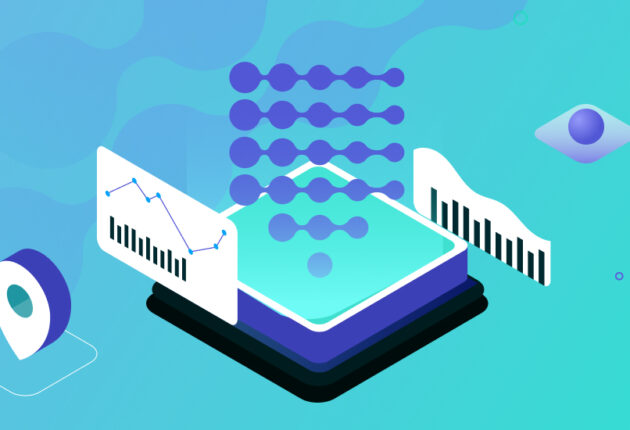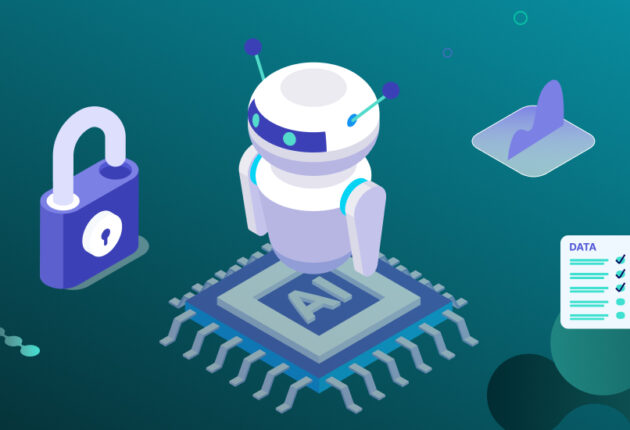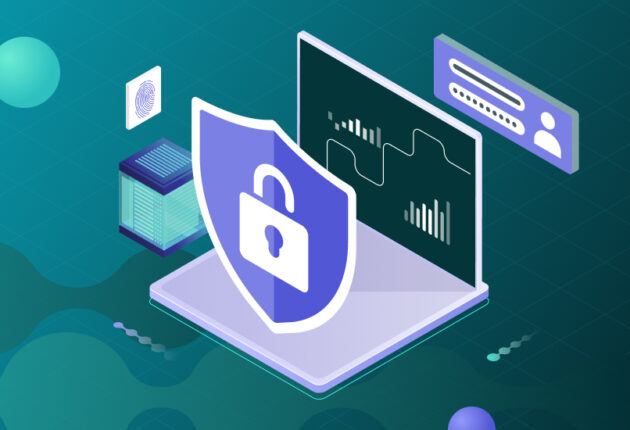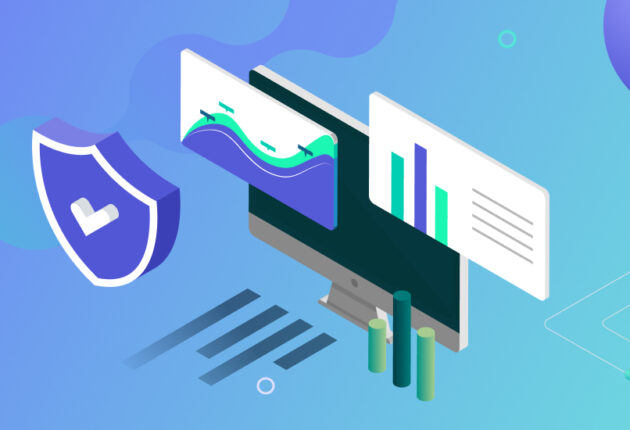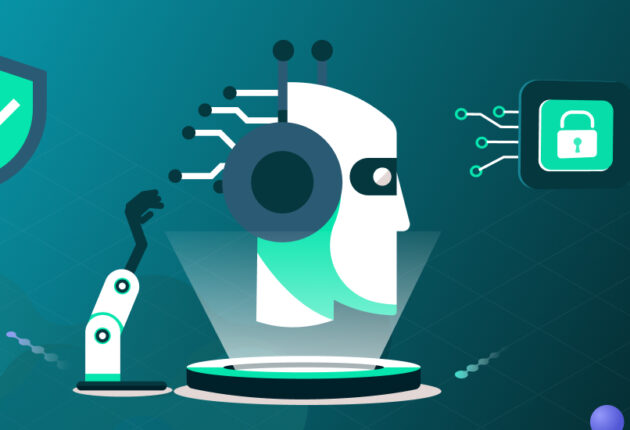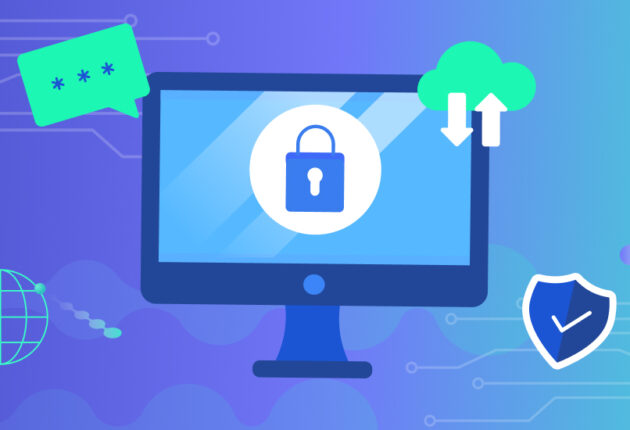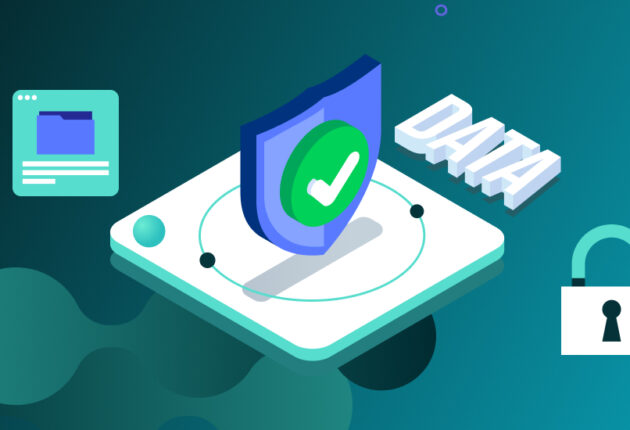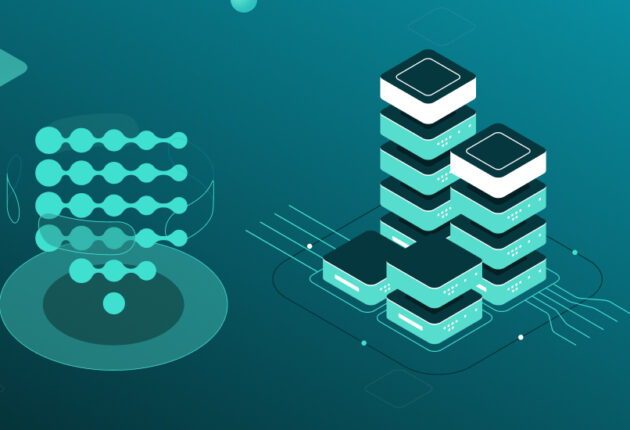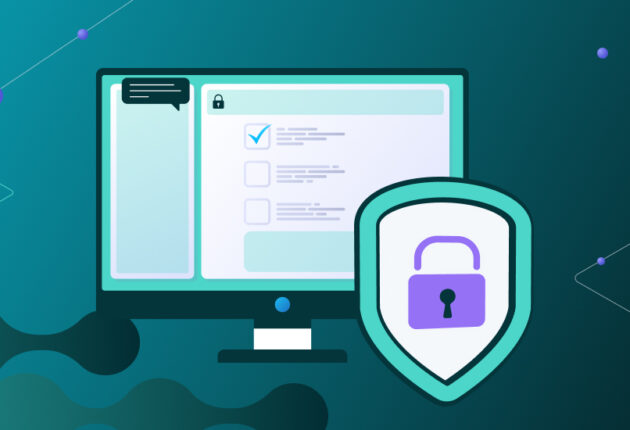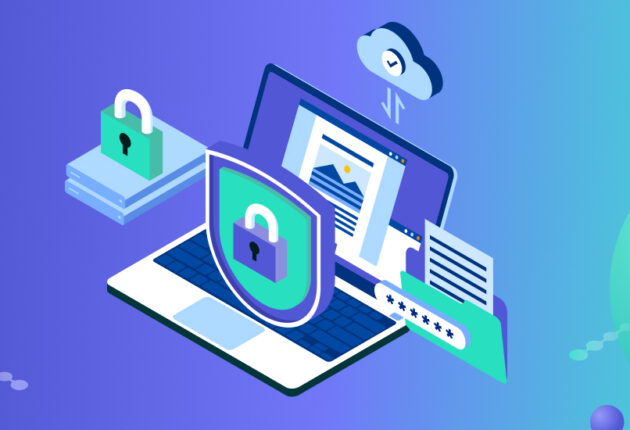Ensuring that only authorized individuals or entities have access to sensitive data is paramount for maintaining data integrity, protecting privacy, and mitigating legal and reputational risks. Effective data access management has become a critical imperative for businesses. It encompasses a range of processes, policies, and technologies designed to control and monitor who can access, modify, or delete data within an organization. This article delves into the risks, technologies, and strategies associated with data access management and explores the emerging concept of differential privacy as a potential game-changer in the field of data privacy and protection.
In this article:
- Data access management definition
- Risks and challenges of effective data access management
- Data access management technologies
- Strategies for effective data access management
- The advent of differential privacy
- Best practices for data access management in the healthcare industry
- Conclusion
Data access management definition
What is data access management?
Data access management refers to the processes, policies, and technologies used to control and monitor who can access, modify, or delete data within an organization. It is a critical component of data governance that aims to safeguard sensitive information. Effective data access management helps organizations protect sensitive data from unauthorized disclosure, maintain data integrity, ensure compliance with regulations, and mitigate risks such as data breaches, insider threats, and accidental data exposure. The key aspects of data access management include:
- Identifying and authenticating users who require access to data through methods like usernames, employee IDs, passwords, biometrics, etc;1
- Defining authorization levels and access controls based on principles like least privilege and role-based access control (RBAC), ensuring users can only access data necessary for their roles;2
- Implementing access control models like discretionary access control (DAC), mandatory access control (MAC), and attribute-based access control (ABAC) to enforce data access rules and permissions;3
- Auditing and monitoring user activities, tracking data access attempts, and maintaining audit logs for security and compliance purposes;4
- Leveraging technologies like identity and access management (IAM) solutions, multi-factor authentication (MFA), single sign-on (SSO), and data masking/encryption to strengthen access controls;5
- Establishing data access policies that cover areas like user identification, authentication, authorization methods, auditing processes, and integrations with other systems.
How does data access management differ from data governance?
Data access management and data governance are related but distinct concepts. Data governance establishes the overarching policies, standards, processes and metrics around how data is managed throughout its lifecycle within an organization. It defines the rules and decision-making processes for data management activities. Data governance provides the foundation and framework for other data management disciplines like data quality, architecture, modeling, metadata management, etc. It does not directly execute these activities itself.6 Data governance focuses on managing data as an enterprise asset-ensuring its availability, usability, integrity, security, and regulation compliance.7
Data access management is a specific process within the broader data governance framework. It controls who has access to which data assets and under what conditions.8 Data access management directly identifies, addresses, and remediates risks arising from unauthorized or excessive access to sensitive data by users (whether malicious or accidental).9 While data governance provides the overarching guidelines, data access management operationalizes those guidelines by defining and enforcing granular access rules and permissions aligned with data classifications and user roles.10 In summary, effective data access management is an essential outcome of a robust data governance program.
Risks and challenges of effective data access management
One of the most significant risks associated with inadequate data access management is the potential for data breaches and unauthorized access. In today’s threat landscape, cyber-attacks, insider threats, and accidental data exposure can have devastating consequences for organizations, including financial losses, reputational damage, and regulatory penalties. According to a report by IBM and the Ponemon Institute, the average data breach cost in 2023 was $4.45 million, highlighting the substantial financial impact of such incidents.11
Another risk associated with inadequate data access management is compliance and regulatory concerns. Organizations operating in regulated industries, such as healthcare, finance, and government, face stringent compliance requirements related to data privacy and security. Failure to implement robust data access governance measures can result in severe penalties and legal repercussions. For example, the General Data Protection Regulation (GDPR) and the California Consumer Privacy Act (CCPA) in the United States impose strict rules on how organizations handle and protect personal data, including access controls and data subject rights.
Finally, while external threats often receive significant attention, insider threats pose a significant risk to data security. According to the same report published by the Ponemon Institute, insider threats account for approximately 25% of data breaches.12 These threats can arise from malicious insiders seeking to exploit data for personal gain or disgruntled employees seeking revenge.
As IBM stresses in its report, Investing Now Can Save Millions, effective access information management and monitoring can help mitigate insider threats by ensuring that only authorized personnel have access to sensitive data and that their activities are closely monitored and audited. Fifty-one percent of organizations plan to increase security investments because of a breach, including incident response (IR) planning and testing, employee training, and threat detection and response tools.13
Overcoming these risks requires a holistic data access management strategy that combines robust governance policies, access control models, continuous monitoring, and auditing processes and leverages emerging privacy-enhancing technologies like differential privacy where applicable.
Data access management technologies
To address the risks and challenges associated with data access management, organizations can leverage various technologies and solutions. Here are some key technologies in this domain:
- Access control models, such as role-based access control (RBAC), attribute-based access control (ABAC), and discretionary access control (DAC), provide frameworks for defining and enforcing access rules and permissions. These models help organizations manage user access rights based on roles, attributes, or ownership, ensuring that data is accessible only to authorized individuals or entities. For example, RBAC can be seen in a healthcare organization, where roles like physician, nurse, billing staff, etc. are defined. Physicians have full access to patient medical records, nurses have read-only access, and billing staff can only view insurance information.14
DAC can be seen in a team collaboration tool, where the person who creates a document can share it with specific colleagues and control editing rights.15 Finally, ABAC can be seen where an e-commerce website could grant different checkout capabilities to users based on their order value, purchase history, membership tier, etc.16 - Identity and access management (IAM) solutions are designed to manage and control user identities, authentication, and authorization processes within an organization. These solutions align with standards like ISO 27001 for centralized user authentication, authorization, and provisioning processes as part of access governance.17 They often integrate with access control models and provide features such as single sign-on (SSO), multi-factor authentication (MFA), and centralized user provisioning and de-provisioning. Popular IAM solutions include Microsoft Active Directory, Okta, and Ping Identity.
- Data masking and encryption technologies play a crucial role in protecting sensitive data from unauthorized access. Data masking techniques, such as obfuscation, pseudonymization, and anonymization, help obscure or remove sensitive information from data sets, while encryption ensures that data is unreadable to unauthorized parties. These technologies are often employed in conjunction with data processing fundamentals and access control measures to provide a multi-layered approach to data security.
Strategies for effective data access management
Effective data access management requires a holistic approach, combining technology, policies, and best practices. Here are some key strategies to consider:
- Data governance and access control policies: according to Gartner, “Data governance is not just about technology; it’s about establishing a culture of accountability and responsibility for data assets.” Therefore, establishing robust data governance and access control policies is the foundation of effective data access management. These policies should clearly define roles, responsibilities, and procedures for managing and controlling access to data assets. They should also outline the principles and guidelines for data classification, risk assessment, and access control mechanisms.
- User access reviews and auditing: regular user access reviews and auditing are essential for maintaining the integrity of access controls and identifying potential risks or violations. These processes involve periodically reviewing user access rights, privileges, and activities to ensure they align with organizational policies and data protection requirements. Auditing tools and techniques, such as log analysis and user behavior analytics, can help organizations promptly detect and respond to potential threats or anomalies.
- Continuous monitoring and incident response: in addition to periodic reviews and audits, organizations should implement continuous monitoring and incident response processes to detect and respond to potential data access incidents or breaches in real time. This may involve deploying security information and event management (SIEM) solutions and intrusion detection and prevention systems (IDS/IPS) and establishing incident response plans and procedures. Effective incident response can help organizations minimize the impact of data breaches, contain the spread of unauthorized access, and facilitate timely remediation and recovery efforts.
Data Peace Of Mind
PVML provides a secure foundation that allows you to push the boundaries.

The advent of differential privacy
What is differential privacy, and how does it relate to data access management?
Differential privacy is a mathematical concept and set of techniques that enable data analysis and sharing while providing robust privacy guarantees. As we have seen in our blog post “What is Differential Privacy? Techniques, Best Practices, and Tips,” differential privacy allows organizations to share and analyze data while protecting individual privacy. By injecting controlled noise or randomization into datasets, Differential privacy ensures that the presence or absence of any individual’s data has a negligible impact on the results or outputs. This provides a way to enable responsible data access and utilization while mitigating privacy risks.
Differential privacy can be integrated into data access management frameworks and policies. Organizations can implement differential privacy techniques when granting access to sensitive datasets, providing differentially private versions of the data based on the user’s privacy clearance level or purpose of access. This allows for more flexible and granular access controls beyond just binary allow/deny decisions.18
Furthermore, differential privacy provides a formal, quantifiable privacy guarantee, unlike traditional anonymization techniques like k-anonymity. This makes it suitable for incorporation into risk-based access control models, where access decisions factor in the formal privacy loss associated with differentially private data releases.19
Integrating differential privacy into data access management frameworks allows organizations to implement granular, risk-based access controls aligned with evolving privacy regulations. However, its adoption requires careful governance of privacy budgets and utility/privacy tradeoffs.
Benefits of using differential privacy in data access management
Differential privacy offers several key benefits when integrated into data access management frameworks and policies. For example:
- Differential privacy gives individuals plausible deniability about their presence or information in a dataset, making it more resistant to linkage attacks that attempt to re-identify individuals by combining multiple data sources.20
- It automatically adjusts the accuracy of query results based on the privacy implications of the query itself. Less privacy-invasive queries can receive more accurate outputs, while riskier queries get noisier results-balancing privacy and utility.21
- Organizations can customize the desired level of privacy by tuning the privacy loss parameter (epsilon). A lower epsilon provides stronger privacy but less utility, while a higher epsilon allows more accurate results at the cost of reduced privacy.
- Differential privacy provides compositionality-the ability to quantify and bind the cumulative privacy loss from multiple analyses on the same data. This enables risk analysis for granting incremental access.22
- By provably limiting disclosure risks, differential privacy can facilitate responsible data sharing and access in compliance with data protection regulations like GDPR while still enabling meaningful data analysis.23
Challenges in implementing differential privacy in data access management
Implementing differential privacy requires significant expertise. Its adoption has been limited, especially among smaller organizations lacking specialized privacy teams and resources. Overcoming these challenges requires careful consideration of the specific use cases, privacy risks, and utility requirements, as well as robust governance processes to manage the privacy/utility tradeoffs and privacy budgets over time as the data landscape evolves.24
Below is an analysis of some key challenges when implementing differential privacy in data access management:
- Compositionality management: differential privacy provides compositionality—the ability to quantify the cumulative privacy loss from multiple analyses on the same data. However, managing this “privacy budget” across different access requests and analyses is complex, especially in dynamic data environments.25
- Diverse data use cases: organizations often have many different use cases and stakeholders with varying accuracy and privacy requirements for the same data assets. Prioritizing and calibrating differential privacy noise levels to meet these diverse needs is challenging.26
- Linkage attacks: while differential privacy is resistant to linkage attacks that attempt to re-identify individuals by combining the data with other sources, its noise-addition mechanisms can be vulnerable if not implemented carefully.
- Suboptimal text data handling: existing differential privacy mechanisms for text data tend to be suboptimal in balancing privacy and utility compared to numerical data, requiring further research into better text privatization techniques.27
Best practices for effective data access management in the healthcare industry
Let’s now look at some of the best practices for effective data access management in the healthcare industry. Effective data access governance in healthcare requires a multi-layered approach combining technical controls, clear policies, continuous monitoring, employee training, and embracing emerging privacy-enhancing technologies—all aligned with regulatory requirements like HIPAA. There are seven steps that organizations should consider:
- Discover and classify all data: organizations should perform comprehensive data discovery to identify all data sources containing protected health information (PHI), sensitive data, regulated data, etc. Companies cannot protect what they don’t know exists. They should leverage machine learning-based data classification to automatically tag and classify all sensitive PHI data beyond just pattern matching.28
- Define data retention and protection policies: organizations should establish clear policies based on regulations like HIPAA for retaining required PHI data and properly disposing of aged or redundant data to minimize risk exposure. They should also implement technical controls like data masking, encryption, and access controls to safeguard critical patient data from unauthorized access.29
- Implement robust access controls: organizations shall adopt frameworks like RBAC to define and enforce granular access permissions to PHI data based on user roles and minimum necessary access principles. They should leverage IAM solutions aligned with standards like ISO 27001 for centralized authentication, authorization, and user provisioning processes.30
- Regular access reviews and monitoring: organizations should conduct periodic user access reviews to validate that users have the appropriate level of access aligned with their job functions. Furthermore, they should implement continuous monitoring of user activities and file access patterns, as well as maintain detailed audit logs for forensic analysis of potential incidents.31
- Incident response and data recovery: organizations should have a well-documented incident response plan to identify impacted data and users in case of a data breach. They should also maintain regular backups and clearly define data recovery processes to ensure business continuity after incidents.
- Employee training and awareness: organizations shall provide comprehensive security awareness training on data handling best practices, incident reporting, and the importance of safeguarding PHI data. They should also establish standardized data entry procedures to maintain data accuracy and integrity.32
- Leverage emerging technologies: organizations should explore differential privacy techniques to enable analysis of sensitive datasets while provably limiting disclosure risks. Finally, they should adopt automation, machine learning, and analytics to enhance access control efficiency, threat detection, and risk-based access decisions.33
Conclusion
Effective data access management is critical for organizations seeking to protect their valuable data assets while enabling responsible data utilization. Data access management is rapidly evolving, driven by technological advancements, regulatory changes, and shifting privacy expectations. By understanding the risks, leveraging appropriate technologies, and implementing robust strategies, organizations can strike a balance between data security and data-driven innovation.
Differential privacy presents a promising approach to safeguarding individual privacy while enabling meaningful data analysis and processing. However, its adoption and implementation will require careful consideration of trade-offs and a deep understanding of the underlying techniques. In the evolving landscape of data access management, organizations must remain vigilant, adaptable, and proactive. By fostering a culture of data governance and accountability, organizations can effectively manage and secure access to their valuable data assets, mitigating risks and unlocking the full potential of their initiatives.
2 See Note 1
3 Cyberark, https://www.cyberark.com/what-is/access-management/
4 Informatica, https://www.informatica.com/gb/products/data-governance/data-access-management.html
5 See Note 3
6 Tableau, “Data Management vs Data Governance,” https://www.tableau.com/learn/articles/data-management-vs-data-governance
7 Atlan, “Data Governance vs Data Analytics,” 27 July 2023, Atlan, https://atlan.com/data-governance-vs-data-analytics/
8 Ovaledge, “Data Access Management,” 29 September 2021, Ovaledge, https://www.ovaledge.com/blog/data-access-management-basics-implementation-strategy
9 Opentext, https://www.opentext.com/what-is/data-access-governance
10 Nikola Askham, “Is Access Management Part of Data Governance?” 16 March 2023, Linkedin, ghttps://www.linkedin.com/pulse/access-management-part-data-governance-nicola-askham
11 https://www.ibm.com/reports/data-breach
12 See Note 11
13 See Note 11
14 Harsh Sahu, “What is access control?,” April 2024, Optiq, https://www.optiq.ai/blog-post/what-is-access-control-4-types-of-access-control-models
15 Nordlayer, “Guides to the types of access control,”Nordlayer, https://nordlayer.com/learn/access-control/types-of-access-control/
16 Stephen Lowing,” What are different types of access control,” Omada, https://omadaidentity.com/resources/blog/what-are-the-different-types-of-access-control/
17 Benn Stancil, “What is data governance,” 17 April 2023, Mode, https://mode.com/blog/data-governance-framework/
18 Immuta team, “What is Differential Privacy,” 17 August 2023, Immuta, https://www.immuta.com/blog/why-differential-privacy-should-be-top-of-mind-for-data-science-and-governance-teams/
19 Nadia Metoui, “Differential Privacy Based Access Control,” https://nadia-metoui.github.io/files/publications/paper_ctc2016differentialprivacyac.pdf
20 Cem Dilmegani, “Differential Privacy,” 12 January 2024, AI Multiple, https://research.aimultiple.com/differential-privacy/
21 See note 20
22 Peter Wayner, “Differential Privacy Pros and Cons,” 4 January 2021, CSO, https://www.csoonline.com/article/570203/differential-privacy-pros-and-cons-of-enterprise-use-cases.html
23 Alexandra Wood et Al, “Designing Acess with Differential Privacy,” https://admindatahandbook.mit.edu/book/v1.0/diffpriv.html
24 https://www.amazon.science/publications/research-challenges-in-designing-differentially-private-text-generation-mechanisms
25 See Note 23
26 Michael B Haves, “Implementing Differential Privacy,” 30 April 2020, HDSR, https://hdsr.mitpress.mit.edu/pub/dgg03vo6/release/6
27 See Note 24
28 https://cloudsecurityalliance.org/blog/2022/01/07/healthcare-cybersecurity-8-data-protection-best-practices
29 Mark Williams, “8 essential data management best practices,” 24 January 2019, Pensar, https://www.pensar.co.uk/blog/8-essential-data-management-best-practices-for-small-business-owners/
30 Mad Devs, “Bog Data Security Best Practices,” 27 September 2023, Mad Devs, https://maddevs.io/blog/big-data-security-best-practices/
31 See Note 29
32 See note 29
33 See Note 7

